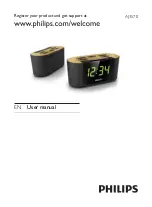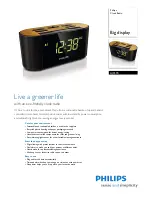
Glossary
98
99
An event in the escapement sequence when the Impulse pallet
*
meshes
with the pallet fork near Dead center
*
.
The name is derived from »nicht variable und oxydfest« (not variable and
non-oxidizing). Non-magnetic, corrosion-resistant, and temperature-
compensating iron-nickel alloy for manufacturing balance springs
*
.
On frictional bearings a hemispherical cavity at the outer opening. The Oil sink
hold a small amount of oil as a reserve.
See Winding period.
It divides the even motion of the Gear train
*
into individual, equal sections.
In mechanical timepieces the pendulum
*
, the balance, and the foliot
*
serve
as the Oscillating organs
*
providing the pulse.
An organ that divides time. In mechanical timepieces this would be the
pendulum
*
or the balance. Also known as the Oscillating organ
*
.
A highly precise image of electric or temporal processes on the screen
of a measuring instrument. It is used in watchmaking Timing machines
*
determining rate
*
precision.
The base of a movement, it holds the bearings and serves as a point to
secure the other components.
The functional part of the pallet
*
lever, usually made of hardened steel or
synthetic jewel. The pallets are added to the body of the pallet fork. The
inclined, polished interfaces are called impulse planes.
See pallets.
Even today the most precise mechanical oscillation device. The oscillation period
is determined by the length of the pendulum and the force of gravity.
To be precise, this is the amount of time that the balance needs to get from
one Point of inversion
*
to the other and back. Traditionally seen, watch -
makers only look at the time needed from one Point of inversion to the other
and call this a Semi-oscillation
*
.
Neutral passage
Nivarox
Oil sink
One-month
Winding period
Oscillating organ
Oscillator
Oscillogram
Plates
Pallet
Pallet stone
Pendulum
Period of oscillation
Invar
Isochronism
Jeweled Lever
escapement
Le Roy, Pierre
(1717-1785)
Lever escapement
Lift
Locking plane
Mainspring
Marine chronometer
Meshing
Minute wheel
Mudge, Thomas
(1715-1794)
The name is derived from invariable. It is a special iron-nickel alloy with 36.8%
nickel. Tempered Invar has a thermal expansion ten times less than steel. This
special alloy was invented by Charles-Edouard Guillaume
*
in 1896 following
extensive studies. Sigmund Riefler
*
was the first to use it, and did so in 1896
as material for pendulum
*
rods in precision clocks.
The constancy of the oscillation period of a regulating organ.
The umbrella term for all escapements whose pallet
*
lever contains jeweled
pallets.
French watchmaker and one of the exceptional pioneers in chronometer
making. Among other things, he invented a free-sprung Chronometer
escapement
*
and a chronometer balance in bimetal
*
. In 1754, he began
making Marine chronometers
*
.
See Swiss Lever escapement.
An escapement phase during which the impulse energy is transmitted to the
balance or pendulum
*
.
Description of the outer radius of the entry pallet
*
and the inner radius of
the exit pallet upon which the escape wheel
*
teeth fall.
A spiral-shaped, rolled up steel spring located in the Spring barrel
*
is
used to drive the movement. A so-called stopworks
*
is added so that
the spring’s elasticity stays as constant as possible throughout the
Winding period
*
.
A precision chronometer used in seafaring navigation, which made it possible
to determine longitude using the precise time
The engaging of wheel
*
and pinion
*
or two gear wheels
*
. The more teeth
touch each other at the same time, the better the energy is transmitted.
A gear wheel
*
on the minute hand arbor. Riveted to the center pinion
*
, it
makes a full rotation once an hour, transmitting energy to the fourth pinion
*
.
Ingenious English watchmaker who invented the Lever escapement
*
in
about 1759. He was an apprentice to the legendary George Graham
*
and
took over his business after his death. Mudge
*
was one of the first
watchmakers to use jewel bearings and he optimized chronometer rates for
Marine chronometers.
M
N
O
P
L
J








































